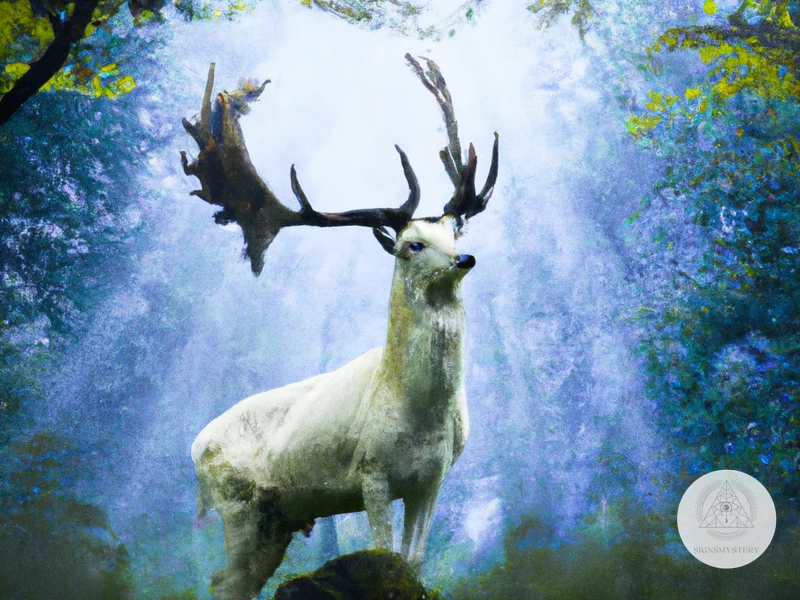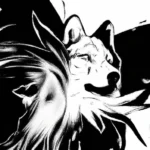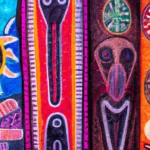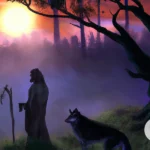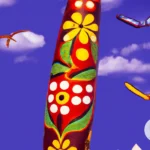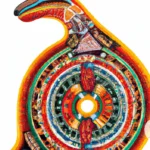Celtic mythology and spirituality are rich with a deep reverence for animals and their significance in the natural world. Throughout the ages, the Celts have viewed animals as spiritual symbols, guides, and even divine protectors. They believed in animal totems and familiars as sources of wisdom and strength, and incorporated animal representations into their deity worship. Animal transformation and shapeshifting were also prominent themes in Celtic myths and legends. Today, the connection between animals and Celtic spirituality continues to thrive, with modern practitioners embracing animal totems, engaging in animal-focused rituals, and promoting conservation efforts. In this article, we will explore the multifaceted role of animals in Celtic mythology and spirituality, their healing powers, and their relevance in contemporary Celtic practices.
Animals as Spiritual Symbols
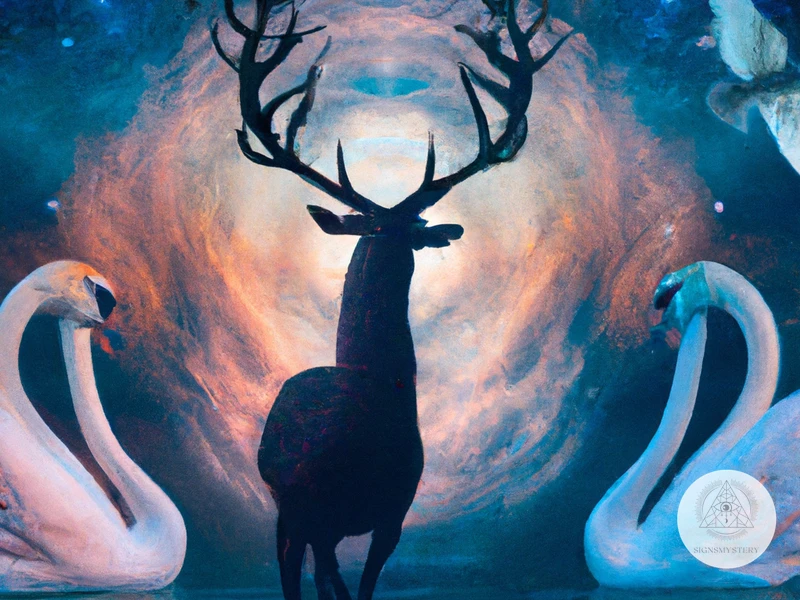
In Celtic mythology and spirituality, animals hold significant value as spiritual symbols, representing various qualities, characteristics, and energies. The Celts developed a complex system known as the Celtic Animal Zodiac, where each animal corresponded to a specific time of the year and possessed unique attributes. These animal symbols were believed to influence the personalities and destinies of individuals born during their corresponding time. Additionally, animal totems and familiars played a vital role in Celtic beliefs, acting as spiritual guides and sources of wisdom. These animal spirits were thought to provide protection, support, and guidance to individuals throughout their lives. Celtic deities were also often associated with specific animals, such as the Morrigan being connected to ravens and Brigid with cows. These divine animal guardians embodied the essence of their associated deities and exemplified the qualities they represented. By recognizing animals as spiritual symbols, the Celts established a deep connection with the natural world and gained insight into the mysteries of life. Understanding the symbolism of animals allowed them to tap into the inherent energies and characteristics that each creature represented, enhancing their spiritual journeys and personal growth.
1. The Celtic Animal Zodiac
The Celtic Animal Zodiac is a fascinating aspect of Celtic mythology and spirituality. Comprising a set of twelve animal symbols, each representing a specific time of the year, the Celtic Animal Zodiac played a significant role in the lives of the Celts. These animals were believed to influence the personalities, characteristics, and destinies of individuals born during their corresponding time. Let’s explore the twelve animal symbols of the Celtic Animal Zodiac:
1. The Stag (December 24th – January 20th): The stag represents independence, grace, and dignity. It is associated with the strength to overcome obstacles and navigate difficult situations.
2. The Cat (January 21st – February 17th): Cats symbolize intuition, mystery, and independence. They are connected to psychic abilities and are believed to possess a deep understanding of the spiritual realm.
3. The Snake (February 18th – March 17th): Snakes symbolize transformation, healing, and rebirth. They are associated with the cycles of life, shedding old skin, and embracing new beginnings.
4. The Fox (March 18th – April 14th): Foxes represent cunning, adaptability, and resourcefulness. They are known for their ability to navigate through challenges and find clever solutions.
5. The Bull (April 15th – May 12th): Bulls symbolize strength, determination, and abundance. They embody fertility, stability, and a strong connection to the earth.
6. The Seahorse (May 13th – June 9th): Seahorses are associated with creativity, flexibility, and adaptability. They symbolize the power of imagination and the ability to navigate the currents of life.
7. The Wren (June 10th – July 7th): Wrens symbolize wisdom, vigilance, and resourcefulness. They are known for their keen observation skills and the ability to find hidden truths.
8. The Horse (July 8th – August 4th): Horses represent freedom, adventure, and vitality. They embody energy, passion, and a strong connection to nature.
9. The Salmon (August 5th – September 1st): Salmon symbolizes wisdom, knowledge, and spirituality. It is associated with the ability to overcome obstacles and swim against the current.
10. The Swan (September 2nd – September 29th): Swans represent grace, beauty, and transformation. They symbolize the ability to navigate emotional depths and find inner peace.
11. The Butterfly (September 30th – October 27th): Butterflies symbolize growth, change, and the power of transformation. They represent the journey of the soul and the beauty that comes from embracing change.
12. The Wolf (October 28th – November 24th): Wolves symbolize loyalty, intuition, and protection. They embody the importance of community and the strength that comes from working together.
The Celtic Animal Zodiac provides insight into the characteristics and energies associated with each animal symbol. Exploring these symbols can help individuals understand themselves better and embrace the qualities represented by their corresponding animal sign.
2. Animal Totems and Familiars
Animal totems and familiars have long been regarded as integral parts of Celtic spirituality. An animal totem is a specific animal that serves as a guide or protector throughout one’s life journey. It is believed that each person has an animal totem that resonates with their unique energy and characteristics. This totem animal acts as a spiritual companion, offering wisdom, strength, and guidance. Celtic practitioners formed close bonds with their totem animals, often conducting rituals or meditations to connect with them on a deeper level. These animal totems were seen as teachers, providing insight into different aspects of life and offering support during challenging times. On the other hand, familiars are spirit animals that form a close relationship with a particular individual or practitioner. Familiars are seen as guardians and helpers, assisting in magical and spiritual practices. They are considered companions and allies, often appearing during rituals or in dreams to offer assistance and protection. The bond between an individual and their familiar is rooted in trust and mutual respect. As per Celtic beliefs, familiars possess their own wisdom and power, and their presence enhances the spiritual journey of the practitioner. It is important to note that animal totems and familiars were not chosen, but rather, they were believed to choose the individual – a profound connection that goes beyond logical explanation. In modern Celtic spirituality, the concept of animal totems and familiars continues to be embraced and celebrated, as individuals seek to cultivate a deeper connection with the natural world and tap into the guidance and energies that these animals represent. For further reading on connecting with spirit animals, you can explore the role of the eagle spirit animal in indigenous cultures worldwide.
3. Divine Animal Guardians
Divine animal guardians hold a prominent place in Celtic mythology and spirituality, serving as protectors and guides. These sacred animals are deeply intertwined with the Celtic deities and are believed to embody their essence and power. One of the most well-known examples is the connection between the Celtic goddess Morrigan and ravens. Ravens are seen as her messengers and symbols of her prophetic wisdom. The raven’s deep black feathers and its ability to soar through the sky are believed to represent the goddess’s connection to the Otherworld and her role as a guide in times of transformation and change. Similarly, the Celtic goddess Brigid is often associated with cows, which are considered gentle and nurturing creatures. In Celtic mythology, cows were seen as a symbol of abundance, prosperity, and fertility, all qualities associated with Brigid. These divine animal guardians act as intermediaries between the Celtic people and the spiritual realm, providing protection, guidance, and inspiration. They serve as reminders of the interconnectedness between humans and the natural world, and their presence is honored and respected in Celtic rituals and ceremonies. Through their relationship with these divine animal guardians, the Celts gained a deeper understanding of the spiritual significance of the natural world and the role that animals play in connecting with the divine. To learn more about animal symbolism in different cultures, you can explore the fascinating link between animals and Egyptian mythology.
4. Animal Representations of Celtic Deities
4. Animal Representations of Celtic Deities:
– Cernunnos: The Celtic god Cernunnos is often associated with the stag or the horned deity. He represents fertility, vitality, and the cycle of life. The stag was considered a sacred animal to the Celts, symbolizing masculine strength and connection to the wild.
– The Morrigan: This Celtic goddess of war and sovereignty is often depicted alongside the raven or crow. These birds were seen as messengers of the Otherworld and were believed to carry prophetic messages. The Morrigan’s association with these birds represents her connection to prophecy and her role as a psychopomp, guiding souls between realms.
– Brigid: Brigid, the Celtic goddess associated with healing, creativity, and smithcraft, is commonly linked to the cow. The cow was revered for its nurturing nature and ability to provide sustenance. It symbolizes abundance, fertility, and the life-giving qualities associated with Brigid’s domains.
– Lugh: Lugh, the god of light, arts, and craftsmanship, is connected to the horse in Celtic mythology. Horses represented strength, speed, and agility, which mirrored Lugh’s attributes as a skilled warrior and craftsman. The horse’s association with Lugh also emphasizes the importance of movement, change, and adaptability.
– Danu: Danu, the mother goddess in Celtic mythology, is associated with the river and flowing water. The river symbolizes the maternal aspects of creation and nurturing, embodying the life-giving and transformative qualities of Danu. Water animals such as salmon and swans are often linked to Danu due to their connection to rivers and their symbolism of grace, wisdom, and intuition.
The animal representations of Celtic deities demonstrate the Celts’ belief in the interconnectedness of nature and spirituality. By associating their gods and goddesses with specific animals, the Celts sought to understand and harness the qualities and powers embodied by these creatures. It deepened their appreciation for the natural world and the wisdom it holds.
Animals in Celtic Myths and Legends
Animals play a fascinating role in Celtic myths and legends, often imbued with mystical powers and serving as important characters in the tales. Animal transformation and shapeshifting are recurring themes, highlighting the belief that humans and animals could freely interchange forms. This concept allowed for magical and metaphorical storytelling, showcasing the interconnectedness between different beings. Animals are also depicted as guides and helpers to heroes on their quests, offering their wisdom, strength, and unique abilities to aid the protagonists in their journeys. These animal companions exemplify loyalty, bravery, and intuition. In Celtic mythological tales, certain animals hold sacred significance, such as the salmon of wisdom, which bestows enlightenment and knowledge upon those who consume it. Animal sacrifice and rituals, although a contentious aspect, were practiced by the Celts to honor and appease the supernatural forces believed to govern life and nature. These rituals were meant to ensure the harmony between humans and the animal kingdom. The intricate portrayal of animals in Celtic myths and legends provides a profound understanding of the Celts’ perception of the natural world and their deep-rooted connection with it.
1. Animal Transformation and Shapeshifting
Animal transformation and shapeshifting have long been prominent themes in Celtic myths and legends. In Celtic tradition, individuals were believed to have the ability to transform themselves into animals through magical rituals or divine intervention. This practice, known as shapeshifting, allowed them to tap into the strengths and abilities of the animal form they assumed. For example, the story of the selkie, a creature that can transform from seal to human, showcases the fluidity between the human and animal realms. Shapeshifting was often associated with powerful druids and mystical beings who possessed the knowledge and skills to traverse different realms of existence. These transformations symbolized the interconnectedness between humans and animals, highlighting the belief in a shared essence and the capacity to access different aspects of being. By embodying animal forms, individuals could gain unique perspectives, tap into instinctual wisdom, and navigate the physical and spiritual realms with greater understanding. This concept of animal transformation and shapeshifting in Celtic mythology reflects the deep respect and connection the Celts had with nature and the belief in the transformative powers of the animal kingdom.
2. Animals as Guides and Helpers
Animals in Celtic mythology and spirituality serve as more than just symbols; they also act as guides and helpers to individuals on their spiritual journeys. The concept of animal totems and familiars is prevalent in Celtic culture, where individuals form a deep bond with a particular animal spirit that serves as their guide and ally. These animal companions are believed to offer wisdom, protection, and support, providing assistance in navigating life’s challenges and decisions. The connection between humans and their animal guides is profound and intimate, with the animals offering guidance through dreams, synchronicities, and intuitive messages. Celtic people sought signs and messages from the natural world, looking to their animal allies for insights into their paths and the lessons they needed to learn. Animals were trusted companions, helping individuals tap into their intuition, uncover hidden knowledge, and find their true purpose. This belief extends beyond Celtic spirituality and can be found in various cultures throughout history, such as in Egyptian mythology where animals were considered sacred and held divine attributes. To enhance the connection with their animal guides, Celtic practitioners often create sacred spaces or altars where they honor and invoke the presence of their spiritual allies. These spaces become focal points for meditation, reflection, and communication with the animal spirits. By nurturing this bond and deepening their connection with the animal realm, individuals gain valuable guidance and support throughout their spiritual journeys. The practice of understanding and embracing animals as guides and helpers continues to thrive in modern Celtic spirituality, with practitioners actively seeking ways to enhance their connection with their spirit animals in sacred spaces and rituals.
3. Sacred Animals in Mythological Tales
In Celtic mythological tales, certain animals hold a sacred significance and are often central to the stories told. One such example is the Salmon of Wisdom, also known as the Salmon of Knowledge. This sacred creature, often depicted as a salmon with a ring of dots on its side, possessed immense wisdom and was sought after by many. According to legend, the Salmon of Wisdom lived in the sacred pool of Connla’s Well, feeding on hazelnuts that fell into the water. It was believed that whoever consumed the flesh of this magical salmon would gain immense knowledge and insight. In the tale of “The Boyhood Deeds of Cú Chulainn,” the young hero, Cú Chulainn, encountered the Salmon of Wisdom and was instructed by the fish to eat its flesh. This act bestowed upon Cú Chulainn great wisdom, making him one of the most renowned warriors in Celtic mythology. Another sacred animal in Celtic mythological tales is the White Hart, a majestic deer with pure white fur and golden antlers. The White Hart was often depicted as a symbol of purity, grace, and spiritual connection. In various stories, heroes and heroines would embark on quests to capture or encounter the White Hart, for it was believed that such an encounter would bring great fortune and blessings. These sacred animals in Celtic mythological tales symbolized the pursuit of knowledge, wisdom, and spiritual enlightenment. They served as guides and catalysts for transformation and played a vital role in shaping the destinies of the characters involved in these ancient tales. Understanding the symbolism and significance of these animals allows us to delve deeper into the rich tapestry of Celtic mythology and the wisdom it imparts to those who seek it.
4. Animal Sacrifice and Rituals
Animal sacrifice and rituals held a significant place within Celtic spirituality. These practices were not meant to be cruel or violent, but rather served as a way to establish a deeper connection with the spiritual realm and honor the interconnectedness of all living beings. Animals, especially those considered sacred within Celtic beliefs, were chosen for these rituals. The rituals were often conducted during specific seasonal festivals or important ceremonies. The animal sacrifice itself was seen as a symbolic act of offering and communion with the gods and goddesses. The Celts believed that through the sacrifice, the essence and energy of the animal would be released, creating a bridge between the earthly and divine realms. The rituals were performed with great reverence and respect, ensuring that the animals were treated humanely and their sacrifice was done with gratitude. Today, such practices are not commonly observed in contemporary Celtic spirituality, as the focus has shifted towards more symbolic and non-harmful rituals. Nonetheless, the acknowledgment of the historical significance of animal sacrifice within Celtic culture is essential in understanding the depths of their spiritual beliefs.
The Healing Powers of Animals
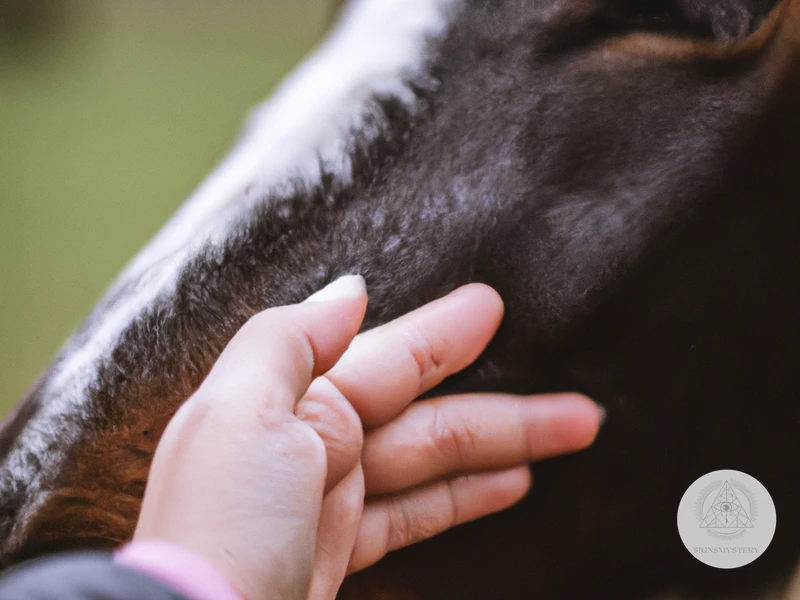
The Celts deeply believed in the healing powers of animals and incorporated them into their spiritual practices. Animal-assisted therapy was a significant aspect of Celtic culture, where animals were utilized to promote physical, emotional, and spiritual well-being. The Celts recognized that animals possessed a natural ability to provide comfort, companionship, and unconditional love. They believed that interacting with animals could alleviate stress, anxiety, and even aid in physical healing. Animal symbolism was prevalent in Celtic healing practices, where specific animals were associated with particular qualities or energies that could be harnessed for healing purposes. For example, the mighty lion symbolized courage and strength, while the gentle doe represented grace and compassion. By connecting with these animal energies, the Celts believed they could tap into their inherent healing powers and restore balance within themselves. This connection to animals and their healing energies extended to sacred spaces, where individuals sought solace and rejuvenation. Animals were often depicted in Celtic artwork found in sacred sites, such as ancient stone carvings of animals or animal motifs adorning sacred objects. These representations served as reminders of the healing powers and sacredness of the natural world. Today, individuals practicing Celtic spirituality can enhance their connection with their spirit animals
Subscribe to Our Newsletter
Sign up to receive the latest news and updates.
1. Animal-Assisted Therapy in Celtic Culture
Animal-assisted therapy has been an integral part of Celtic culture, harnessing the healing powers of animals to promote physical, emotional, and spiritual well-being. The Celts believed that animals possessed a deep connection to the natural world and the spiritual realm. This understanding led to the development of therapeutic practices using animals as catalysts for healing. By interacting with animals, individuals could tap into their innate instincts and connect with a sense of harmony and balance. For example, the presence of horses in equine-assisted therapy sessions offered opportunities for individuals to develop trust, enhance communication skills, and foster emotional and physical growth. Dogs were also highly regarded for their ability to provide comfort and support to those in need, acting as empathetic companions during challenging times. The Celts recognized the profound impact of animals on human well-being, utilizing their innate qualities to facilitate healing on a deep level. Animal-assisted therapy in Celtic culture involved creating sacred space where animals and individuals could interact, fostering a sense of connection, and strengthening the bond between humans and the natural world. This therapeutic approach sought to heal the mind, body, and spirit by embracing the wisdom and energy of our animal counterparts.
2. Animal Symbolism in Healing Practices
Animal symbolism in Celtic healing practices holds a profound significance, as the Celts believe that animals possess unique energies and qualities that can aid in physical, emotional, and spiritual healing. The Celts recognized that animals, with their innate connection to nature, held a deep wisdom and understanding of the natural cycle of life. This understanding led to the integration of animal symbolism in various healing rituals and practices. For example, certain animals were associated with specific healing properties, such as the bear symbolizing strength and resilience, or the deer representing grace and gentleness. By invoking the symbolism of these animals, individuals sought to tap into their corresponding qualities and harness their healing energies. Animal-associated symbols and imagery played a vital role in Celtic healing ceremonies, such as the use of animal motifs in healing sigils, amulets, and talismans. The belief in animal symbolism also extended to dream interpretation, where animals appearing in dreams were believed to convey important messages and offer guidance on healing processes. This deeply ingrained belief in the healing powers of animals continues to resonate in modern Celtic spirituality, with practitioners drawing inspiration from animal symbolism to facilitate their own healing journeys.
The Modern Connection: Animals in Celtic Spirituality Today
In today’s contemporary Celtic spirituality, the connection between animals and spiritual practices remains strong. Many individuals incorporate animal totems into their personal journeys, seeking guidance, inspiration, and support from their chosen animal spirit. These animal totems serve as a source of wisdom and strength, helping individuals navigate through life’s challenges and make empowered decisions. Rituals and ceremonies centered around animals are also prevalent in modern Celtic spirituality. These rituals may involve honoring and connecting with specific animals or invoking their qualities and energies for specific intentions. For some practitioners, creating a sacred space dedicated to their spirit animals is an essential part of their spiritual practice. This space serves as a sanctuary where they can connect with their animal guides, meditate, and deepen their understanding of the spiritual realm. Conservation and respect for wildlife are also integral aspects of modern Celtic spirituality. Practitioners recognize the importance of protecting and preserving the natural habitats of animals, understanding that their well-being and existence are intricately connected to the balance of the Earth’s ecosystems. By promoting conservation efforts and fostering reverence for wildlife, modern Celtic spiritualists strive to maintain a harmonious relationship with the animal kingdom, honoring their spiritual significance and acknowledging their role as fellow inhabitants of the Earth.
1. Animal Totems in Contemporary Celtic Spirituality
In contemporary Celtic spirituality, the concept of animal totems continues to hold great significance. Today, many individuals connect with specific animals as their personal totems, seeking guidance and inspiration from these spiritual allies. Animal totems are regarded as representations of different qualities and characteristics that individuals can relate to or aspire to embody. Each person may resonate with a particular animal, feeling a deep affinity and connection to its symbolism. These animal totems often serve as sources of strength, wisdom, and guidance, offering support and insight on one’s spiritual path. To work with animal totems, practitioners may engage in various practices such as meditation, visualization, or creating altars and sacred spaces dedicated to their chosen animal. This allows for a deeper connection to be established, fostering a harmonious relationship between the individual and their totem animal. By embracing animal totems in contemporary Celtic spirituality, individuals can tap into the wisdom and energy of these animals, enriching their spiritual experiences and personal growth.
2. Animal-Focused Rituals and Ceremonies
Animal-focused rituals and ceremonies play a significant role in Celtic spirituality, allowing individuals to connect deeply with the natural world and the spiritual energies embodied by different animals. These rituals often involve creating sacred spaces where participants can commune with their animal totems and seek guidance. For example, individuals may set up an altar or shrine adorned with objects representing their animal allies, such as feathers, bones, or images. The ritual may begin with a meditation or prayer to invoke the presence and wisdom of the animal spirits. Participants may also engage in movements or dances inspired by the animal’s characteristics, embodying their power and grace. Through these rituals, individuals seek to establish a profound bond with their animal totems and harness their energies for personal transformation and spiritual growth. Animal-focused ceremonies are often held during specific times of the year, aligning with Celtic festivals and lunar cycles. These celebrations may involve storytelling, music, and outdoor rituals to honor and pay homage to the animals and their symbolic significance. By actively engaging with animals in rituals and ceremonies, practitioners of Celtic spirituality strengthen their connection with the natural world and tap into the mystical forces that animals represent. [Enhancing the connection with one’s spirit animal in a sacred space](/enhancing-connection-spirit-animal-sacred-space/) can profoundly enhance the spiritual experience and bring deeper insights into one’s path.
3. Conservation and Respect for Wildlife
Conservation and respect for wildlife are fundamental principles in contemporary Celtic spirituality. Drawing inspiration from their ancestors’ reverence for animals, modern practitioners actively engage in efforts to protect and preserve the natural world. By recognizing the interconnectedness of all living beings, they strive to maintain ecological balance and ensure the well-being of animal species. Many Celtic spiritual communities participate in wildlife conservation projects, donate to organizations that focus on preserving habitats and endangered species, and promote sustainable practices that reduce harm to wildlife and their environments. This commitment to conservation aligns with the spiritual belief that animals are sacred and deserving of our care and protection. By integrating conservation practices into their spiritual rituals and daily lives, modern Celtic practitioners embody the respect and appreciation for wildlife mentioned in their ancient mythology and folklore. Through this connection, they strive to maintain harmony and preserve the delicate balance of nature for future generations to enjoy and appreciate.
Conclusion
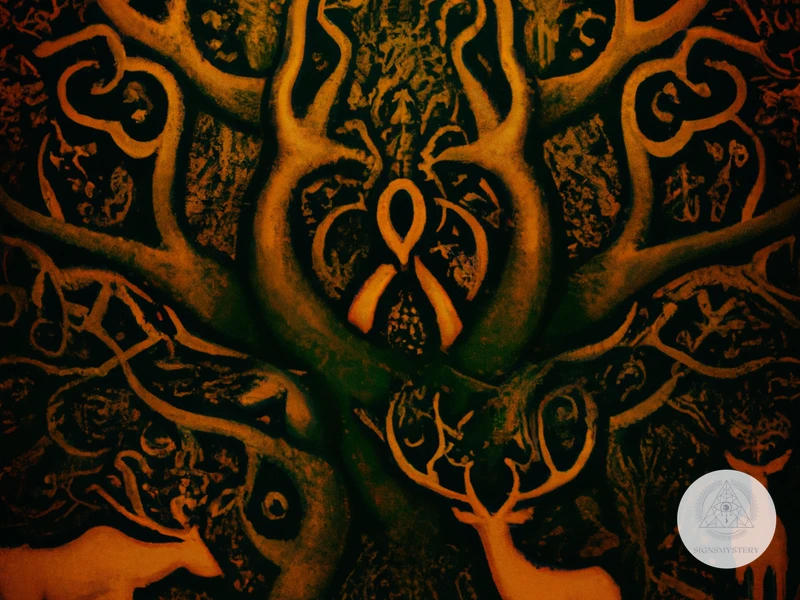
In conclusion, animals hold a profound significance in Celtic mythology and spirituality. They are regarded as spiritual symbols that embody qualities, energies, and wisdom. The Celts recognized the power of animal totems and familiars, utilizing their guidance and protection in their spiritual journeys. Animal representations of Celtic deities further reinforced the connection between animals and the divine. Today, animals continue to play a vital role in Celtic spirituality, with practitioners embracing animal totems and incorporating animal-focused rituals and ceremonies into their practices. Moreover, the Celts’ reverence for animals extends beyond spiritual purposes, emphasizing conservation efforts and respecting wildlife. By understanding and respecting the role of animals in Celtic mythology and spirituality, we can cultivate a deeper appreciation for the interconnectedness of all living beings and the wisdom they offer. To explore animal symbolism in other mythologies, you can delve into the world of Egyptian mythology where animals also hold great significance.
Frequently Asked Questions
1. How were animals chosen for the Celtic Animal Zodiac?
The animals in the Celtic Animal Zodiac were chosen based on their characteristics, behaviors, and their relationship to the natural cycles of the seasons. Each animal symbolized specific qualities and energies that were believed to influence individuals born during their corresponding time.
2. What is the significance of animal totems and familiars in Celtic spirituality?
Animal totems and familiars hold great significance in Celtic spirituality, as they are seen as spiritual guides and sources of wisdom. They provide individuals with support, protection, and guidance on their spiritual journeys. By connecting with their animal spirits, individuals can tap into the unique qualities and energies that these animals represent.
3. How did animals become representations of Celtic deities?
In Celtic mythology, animals were chosen to represent certain deities based on their associations, symbolism, and qualities. For example, the raven was associated with the Morrigan, a goddess of war and fate, due to its mysterious nature and connection to battle. Animals were seen as embodiments of the deities’ powers, acting as their physical representatives and channels of their divine energy.
4. Were there any stories of animal transformation and shapeshifting in Celtic myths?
Yes, animal transformation and shapeshifting were prevalent themes in Celtic myths. The tales often featured individuals, such as druids or heroes, who had the ability to transform into animals. These transformations were often symbolic of the characters’ connection to the natural world, their magical abilities, or their role as intermediaries between human and animal realms.
5. What roles did animals play as guides and helpers in Celtic mythology?
In Celtic mythology, animals often played the role of guides and helpers to various characters. They would provide assistance, guidance, and even transformative experiences to heroes on their quests. Animals were seen as wise beings with a deep understanding of the natural order, and their presence often signaled important lessons or revelations for the protagonists.
6. Were there specific animals considered sacred in Celtic mythological tales?
Yes, several animals held sacred status in Celtic mythological tales. For instance, the salmon was revered for its wisdom and knowledge. It was believed that by consuming the Salmon of Knowledge, one could gain great wisdom and foresight. Similarly, the white stag was considered a harbinger of great significance, often appearing as a guide in quests or a symbol of divine intervention.
7. Were there any animal sacrifice rituals in Celtic mythology?
Animal sacrifice rituals did occur in Celtic mythology, particularly in religious ceremonies and seasonal festivals. These sacrifices were seen as a way to honor and appease the gods, as well as to ensure fertility, abundance, and protection for the community. The choice of animals for sacrifice varied depending on the occasion and the deity being honored.
8. How were animals involved in ancient Celtic healing practices?
The Celts believed in the healing powers of animals and incorporated them into their healing practices. Animal-assisted therapy was prevalent, where animals such as dogs, cats, and horses were used to provide comfort, companionship, and emotional support to individuals seeking healing. Animals also held symbolic importance in healing rituals, representing various qualities and energies necessary for restoration and well-being.
9. How do modern practitioners embrace animal totems in contemporary Celtic spirituality?
In modern Celtic spirituality, individuals often embrace animal totems as personal guides and sources of inspiration. They may connect with their animal totems through meditation, visualization, or by studying the characteristics and symbolism associated with specific animals. By aligning with their animal totems, practitioners seek to embody the qualities and wisdom represented by these creatures in their daily lives.
10. How do modern practitioners show respect for wildlife and promote conservation in Celtic spirituality?
Modern practitioners of Celtic spirituality recognize the importance of respecting wildlife and promoting conservation efforts. They prioritize living in harmony with nature, practicing sustainable lifestyles, and supporting organizations that work towards protecting endangered species and preserving natural habitats. This commitment to conservation is a way of honoring the spiritual connection between humans and animals, as well as ensuring the well-being of the Earth.
References
Frequently Asked Questions
FAQs about the Role of Animals in Celtic Mythology and Spirituality
1. What animals are associated with the Celtic Animal Zodiac?
The Celtic Animal Zodiac includes animals such as the stag, boar, salmon, and owl, each representing different personality traits and qualities.
2. How do animals become totems and familiars in Celtic spirituality?
In Celtic spirituality, animals can become totems and familiars through a deep personal connection and bond between an individual and a specific animal, often through dreams, visions, or personal experiences.
3. Who are the divine animal guardians in Celtic mythology?
Celtic mythology features divine animal guardians such as the Celtic wolf, who is associated with protection and loyalty, and the Celtic eagle, symbolizing wisdom and spiritual insight.
4. Which Celtic deities are associated with specific animals?
Celtic deities like Brigid, the goddess of fertility and fire, is often depicted with a cow, while Cernunnos, the god of animals and the underworld, is associated with the stag and other forest creatures.
5. How do animals transform and shapeshift in Celtic myths?
Animals in Celtic myths are often known for their ability to transform into human form or take on other animal shapes. This transformation is often associated with magic and symbolism in Celtic mythology.
6. What roles do animals play as guides and helpers in Celtic mythology?
Animals serve as guides and helpers in Celtic mythology by guiding heroes through challenges and providing wisdom, strength, and courage in their quests and journeys.
7. Which animals are considered sacred in Celtic mythological tales?
Animals like the white stag, the crane, and the cat hold sacred significance in Celtic mythological tales, representing various aspects of Celtic culture, spirituality, and folklore.
8. Were animal sacrifices a part of Celtic rituals?
Yes, animal sacrifices were a part of some Celtic rituals, particularly during important festivals and ceremonies as offerings to the gods and to seek their blessings and protection.
9. How did animals assist in healing practices in Celtic culture?
Animals played a significant role in healing practices in Celtic culture, primarily through animal-assisted therapy, where certain animals were believed to possess healing energies and could provide comfort and support to individuals.
10. How are animal totems incorporated in contemporary Celtic spirituality?
In modern Celtic spirituality, individuals often connect with animal totems as spiritual guides and seek their wisdom and symbolism for personal growth, self-discovery, and guidance in life’s journey.
References
- Spirit Animals and Spirit Guides – Celtic Spirit Books
- Celtic Animism
- Celtic Animism & Mythology for Nature Travelers | Scotland

